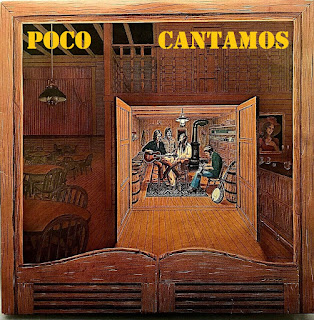There are two distinct bands that are Spirit (well, three at least, but bear with me here), in the same way that there are two different,distinct eras of Spirit. There was Spirit, the original band, from 1967 to 1971, a tight, concise ensemble built around the talents of guitar player and lead singer Randy California, but also Jay Ferguson's on vocals and persussion, and the contributions of John Locke on keyboards and the solid rhythm section of bass man Mark Andes and California's stepdad Ed Cassidy on drums. That group came to a grinding halt when California accused Ferguson and Andes of plotting to take the group away from him, with both then quitting to form Jo Jo Gunne.
And then there is Spirit Mark II, which is the band that named itself Spirit from about 1974 onwards. Spirit Mark II was a curious band, not only because it was Randy California and his stepdad plus whoever was available. (We're just gonna skip the weird 1971 - 1973 intermezzo, where the band was without California and led by the Staehely brothers). Spirit Mark II was, arguably a weaker band then the original, yet in many ways I find them more interesting, and they are definitely more interesting for the purposes of One Buck Records.
The trademark of Spirit Mark II is its shambolic nature, a band built around whatever whims Randy California was having at any time. Sprit Mark II was the band that figured that having a couple of unfinished guitar noodles and some Star Trek dialogue run through a vocoder would suffice to make an album (narrator: it did not). Randy California was a bit like his idol Jimmy Hendrix, obsessively recording himself. In Spirit Mark II, California would often just take whatever little guitar doodles he had lying around and put them to use. Sometimes he would turn them into complete, structured or relatively structured songs, and often he would not.
The 'found object, anything goes' esthetic of Spirit Mark II means that that part of Spirit's career is perfect for alternate album explorations, a specialty here at One Buck Records. Since the work is so shambolic and seemingly random, it feels much more justified to de- and reconstruct, or in some cases to construct from the ton of outtakes California & Co. left behind. In what for the moment is planned as a series of four alternate Spirit albums, we start with something deceptively simple: Trying to turn Spirit's sprawling, full of detours extravaganza Spirit of '76 into a single album. Deceptively simple because when I tried to actually do it, some tough cuts had to be made. But I think I ultimately suceeded in trimming down the wealth of material into a relative coherent single album statement.
Speaking of wealth of material. Most of the material on Spirit of '76 (and the one ending up on follow-up Son Of Spirit) was written 'on spec', with Spirit renting out Studio 10 in Tampa to put as much material on tape as possible. This material got them their record deal with Mercury Records, but it also announced how Spirit Mark II would operate. The inspired and the weird, the constructed and the unfinished, sitting side by side in what would become the band's de facto method of operation.
I wanted to keep most of the album's covers - in the context of the album it sounds like California compiling the New American Songbook: Dylan, of course, as a pillar, but also a foundational piece like "Walking The Dog", a new folk standard popularized by his idol Jimi Hendrix ("Hey Joe") and a nod to the Rolling Stones ("Happy"). That's a pretty good new songbook to my ears. California's own compositions show plenty of his spacey, echoey guitar on languid numbers like "Lady Of The Lakes" or his trip to "Urantia", the run-out groove of this single album's side one as it were, while he really wheels out heavy guitar playing on "Walking The Dog", his fantastic nine minute version of "Like A Rolling Stone" (which starts slowly and calmly, then builds up a head of steam) or "Victim Of Society". That track was somewhat of a headache for me, as it's a relatively generic rocker, so I long debated leaving it off this single album version but finally decided to keep it.
Spirit themselves placed the bookends perfectly, recalling the upcoming Bicentennial celebrations of the nation, with their "America The Beautiful/The Times They Are A-Changing" medley to start and "The Star-Spangled Banner" (plus a snatch of "Times") to end the album, so that would obviously stay. But I still wanted to program the album as, at least partly a personal journey of personal enlightenment, so it builds to the double climax of "My Road" and "Thank You Lord", two songs that mirror and answer each other, before the entirely reconstructed and funky (when has that song ever been accused of that?!) "Star-Spangled Banner", in another nod to idol and mentor Hendrix, finishes things.
So, Spirit of '76 as a concentrated shot of rock'n'roll, 49 minutes just squeezing under the upper limits of vinyl records of the time. I think it works rather splendidly like this. I hope you get into the, uh, spirit of this, and agree...












































